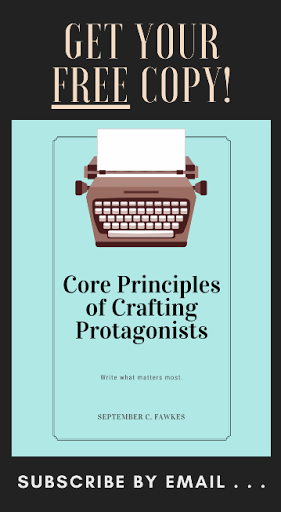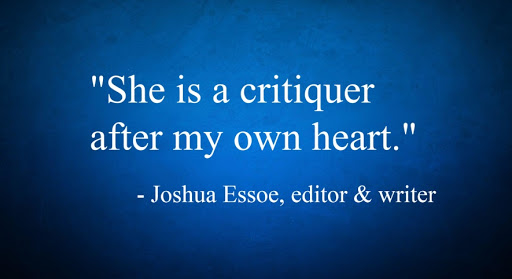In my last post I talked about how subtext works and how to (not) write it. I mentioned that in some places, in some stories, you may want to make your reader's experience deviate from your character's experience.
Uh oh.
Does that not break a writing rule? Don't we want to write our stories so our readers feel like they are experiencing what our characters are? After all, I wrote that whole post about writing empathetically instead of sympathetically and sentimentally, and before that I wrote this post about putting the emotional tension in your reader, instead of writing about it on the page.
So what gives?
There are some situations where making your reader experience something different (and sometimes the opposite) of your viewpoint character is exactly what you want and need to do. So let's talk about how to break this writing rule properly.
Rather than recap the rule and how it works (like I did on my other "breaking writing rules" posts), I'd rather just link to the posts where I already talked about the rule, how it works, and how to do it.
Writing Empathetically vs. Sympathetically and Sentimentally
Let Your Reader do the Work
When to Break the Rule
1) You have an unreliable narrator or a blind character
I'll pick up from my last article. When you are using subtext to write unreliable narrators or blind characters, you depend on your reader's experience deviating from the viewpoint character's. The reader has to think and feel something different than the character, so they can come to a different conclusion. You can read how to do that here.
2) You are writing about an unlikable person
When writing about an unlikable character, you often don't want your audience to feel the same way as your character. If you rendered that character's experience exactly as they felt and saw it, readers would probably hate the book. So instead you might write about the character in an entertaining way. Watch Saving Mr. Banks (no, don't watch it, it's a lie!) and you'll see how the filmmakers didn't try to get the audience to feel the exact same things Pamela Travers did, instead they used her unlikeable characteristics to entertain the audience (often with humor).
Next week I'll be talking about turning unlikeable people into likeable characters, with the help of April from Park and Recreation
3) To create a certain type of humor
Certain kinds of humor require the audience's emotional experience to be different than the character's. Humor that works off moments of embarrassment and awkwardness or satire often depends on this deviation. Just watch this video. If you find it funny, your emotional experience is completely different, if not the exact opposite of the protagonist.
4) When writing summary
Sometimes the fact your character thinks or feels a certain way is important for your reader to know, but not important enough for your reader to experience it in a full-blown scene. For example, in The Hunger Games by Suzanne Collins, after Katniss shoots an apple in the gamemaker's pig's mouth, Collins writes that Katniss went in her room and cried most of the afternoon (I think it was afternoon). We get a summary of how Katniss feels. We don't feel the same extent of sadness that Katniss does.
5) You have a powerful narrator
You might be writing a story where the narrator itself is more of a viewpoint character than your protagonist, like Lemony Snicket is in The Series of Unfortunate Events. This takes us further from experiencing the protagonist's thoughts and emotions vicariously, and instead lets us be entertained by the way Lemony Snicket tells the story. We might find something Lemony Snicket said funny at the same time our protagonists are crying because someone has just died.
6) You need to take the thunder out of your story
I know this one sounds a little ridiculous, but in truth, there are some situations where you want or need to take the thunder out of your story. You need to distance your reader from what is happening. For example, if you are writing a book about the holocaust and it's target audience is intermediate students, then rendering the thoughts and emotions of those victims perfectly would likely be too horrific for a young audience to take in. It wouldn't be school appropriate. It's reason like this that movies like The Pianist are rated R.
So there you go, six situations where you may not want your audience to feel the same way as your character.
How to Break the Rule
There are (as far as I've discovered) three ways to deviate your audience's experience from your readers: subtext, tone, and summary.
Subtext leads the audience to come to a different conclusion than the characters, which leads the audience to feel differently.
Tone can make the way the scene is told different than the way the character experiences it.
Summary (almost) always creates distance from the emotions and intellectual experiences of the character. Telling the audience about what happened with the character is less powerful than showing it.
Here is how I would probably handle each of the situations I listed, though you could use more than one method for each one.
1) You have an unreliable narrator or a blind character
Use subtext
2) You are writing about an unlikable character
Tone
3) Humor
Tone
4) Summary
Self-explanatory
5) You have a powerful narrator
Tone
6) You need to take the thunder out of your story
Summary and tone
And there you have it.
It's okay to have your reader's experience deviate from your character's.
Join me next week as I talk about making unlikeable people into likeable characters.





















What about if you want to shock your readers with information that your main character knows but the narrative purposely hides it so that the reader doesn't?
ReplyDeleteEg: A murder mystery where the main character is the murderer but is written as another witness and only in the end, reveals their position in the murder case or not at all--all of it is implied and the reader needs to read between the lines to figure it out.
This is not something I'm writing but rather a thing I thought of just now. XD Although I quite like this idea now.
Most writers will tell you that you can't do this, but I still believe all writing rules can be broken, if you break them for a reason and break them well. This one would be very difficult to pull off.
DeleteIt's a fun idea that I've actually heard before, but I have yet to see a great version of it. I'd love to see someone pull it off though!